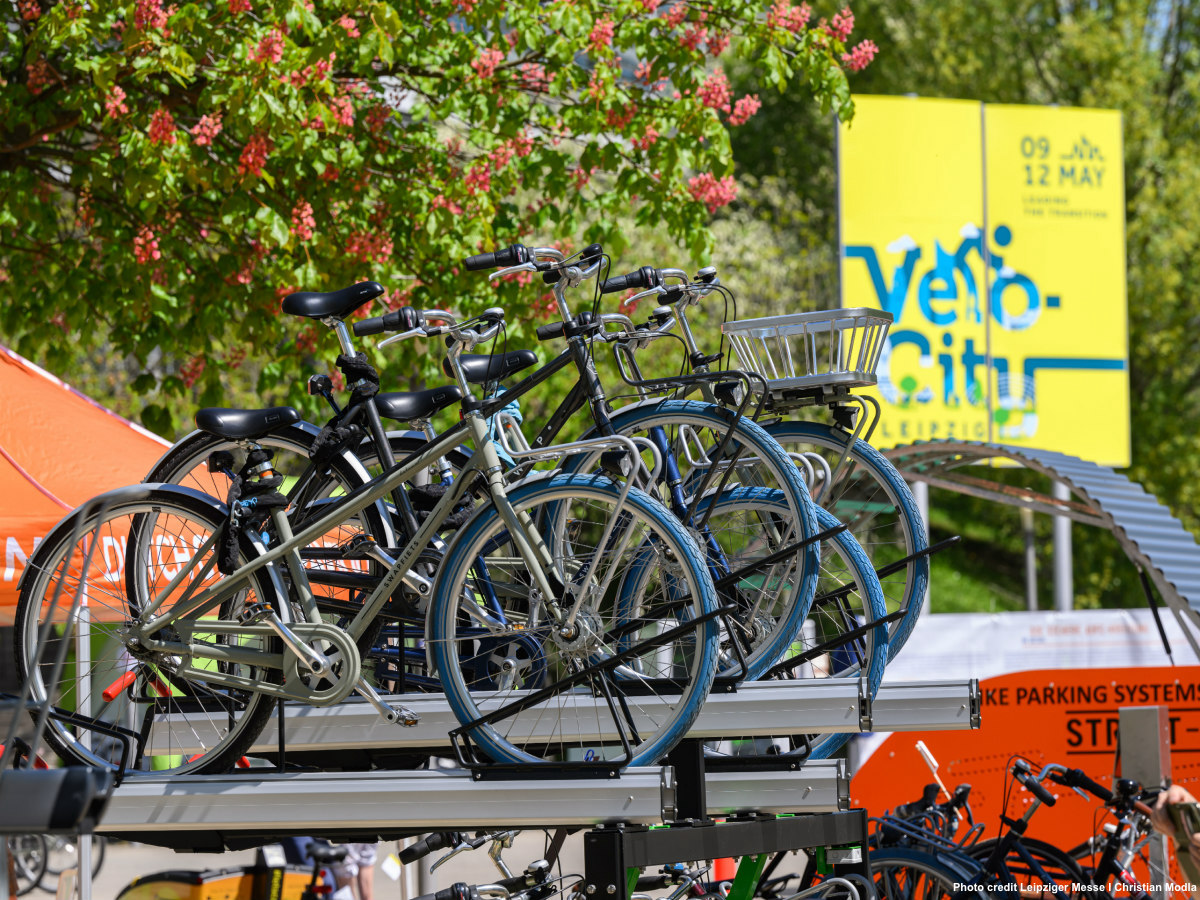When Curly Bloxks was arrested in a skate park in Manhattan last summer, and she asked for the reason, the police officer bluntly responded that it was the easiest way to break down the crowd. This was not a mob or some kind of violent protest but rather a feisty bunch of people on bikes willing to follow Curly Bloxks outside Instagram. Her wheelies and cycling style has empowered many women, and riders of any kind, to experience bike life in the streets of Manhattan, often without bike infrastructure.
While authorities in some cities see these bike gatherings, presumably in need of a permit, as a threat to the streets, in others they just turn a blind eye to them. One couldn’t help wondering what the difference really is between strangers on bikes shoulder to shoulder on packed bike lanes in Amsterdam and that bunch in Manhattan. The former would be described as exemplary bike infrastructure, but in the absence of that, the latter, social infrastructure jumps in.
This year at the Velo-city conference, these two concepts are tiptoeing into each other’s worlds. Race, gender, health and subcultures are not topics you would usually associate with cycling, but change is afoot, symbolized by the intermingle of voices from cities around the planet, literally. From Melbourne to Jerusalem people flocked to this conference organized by the European Cyclists’ Federation and hosted by The City of Leipzig.
Some are veterans to the conference like Lars Stromgren, who never missed a Velo-city conference since he attended the first one in 2013 in Vienna as a cyclist enthusiast. This year his presence as Vice Mayor of Transport and Urban Environment for the City of Stockholm, symbolized how the soft power of the conference is growing. Jill Warren, CEO of the European Cyclists’ Federation, makes the point: “With more delegates and speakers than ever before, this year’s Velo-city conference in Leipzig underscored the further potential cycling has to transform our cities and societies.”
There is an increase in the number of women, people of color and grassroots organizations represented at the conference, but it must be said, there is still some way to go. Among fresh faces at the Velo-city, is Olatunji Oboi Reed, the director of Equiticity in Chicago, an up-and-coming racial equity tactician working in mobility justice with new takes on cycling.
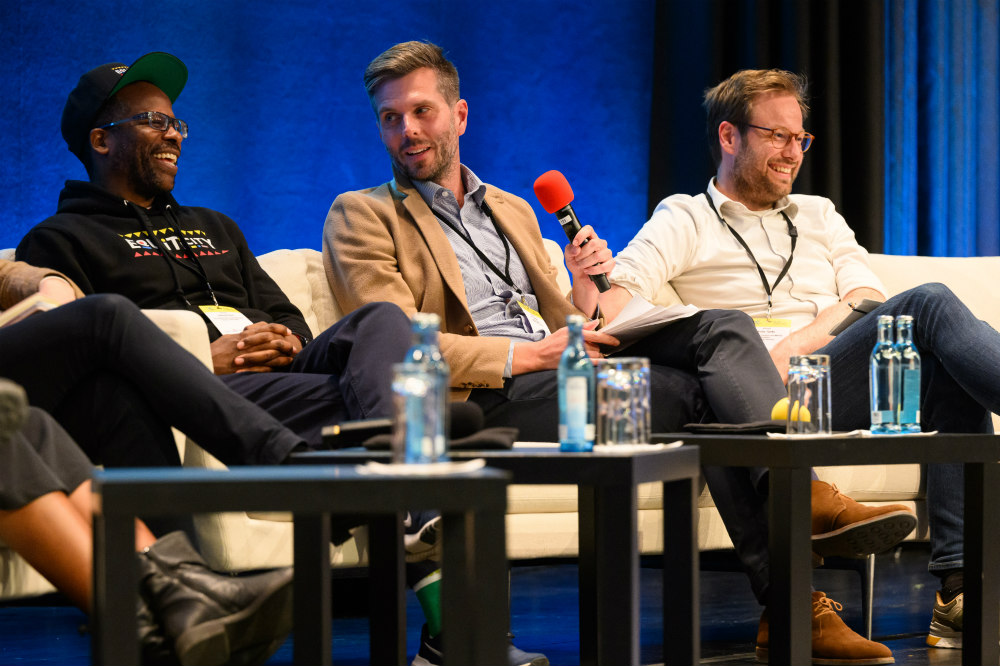
His presentation at the plenary session Working together towards equitable environments set the tone for a part of the conference that has seen another narrative unfolding beyond bike infrastructure and planning, that often overlooks systemic issues of racism, classism, and displacement in cities. “The bike is part of a bigger plan” said Oboi at the session, citing the example of his neighborhood, where more people ride a bike and walk, when the perception of violence goes down. “In my neighborhood bike infrastructure such as bike sharing programs has failed because people don’t commute to work. How to get people excited to ride requires physical infrastructure and social infrastructure growing together.”
And he adds “a one-size fits all design strategy for cycling doesn’t work in some communities” because the existing oppression of his BIPOC community has been already made by design. “US cities need non-punitive strategies to make streets safer.” Sitting close to transportation city officials, Oboi didn’t shy away from his belief that “for any strategy or bike infrastructure to work it has to reflect people’s culture and identity. Marginalized communities should own the process of planning and share power and decision making with city planners and authorities.”
In German cities, these words might resonate. City officials are struggling to get more migrant communities to cycle, says the Board Member of the German Bicycle Club Lobby ADFC, Christoph Schmidt. He raised a case in point when he mentioned alternatives to cycling like the increasingly unpopular e-scooters, which paradoxically have managed to reach other kinds of people and have kept them away from cars in cities.
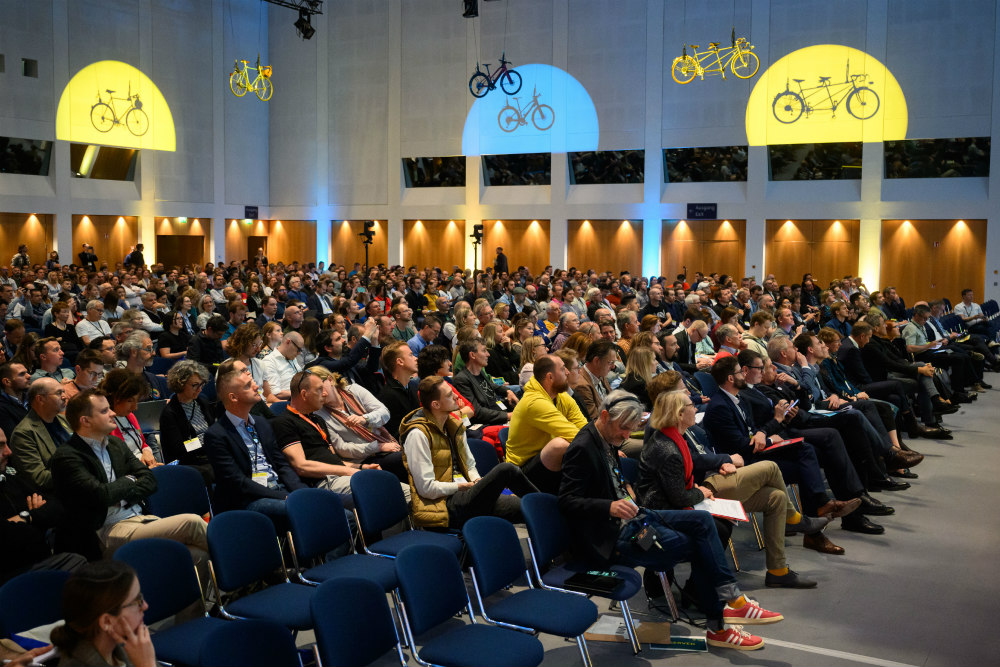
The conference was full of physical reminders that no matter in which city we are, we need to figure out how to get to the places we need to go. The challenge for everyone remains the same, after all. The differences in the access to a decent offer in urban mobility, including cycling, will determine, though, some of the inequities in our society. Health is another of them.
In 2030 one billion people will live with obesity around the world, and “we do see highest rates among low socioeconomic groups in high-income countries, but most rapid increases in low- and middle-income countries,” says Jo Jewel, Director of Cities Changing Diabetes at Novo Nordisk. “The health community is very interested in city planning and infrastructure that encourages physical activity and influences people’s diets,” like dismantling barriers to access healthy food. “Cycling strategies could all equip the health community to achieve positive outcomes for active travel without putting the individual at the center of the effort.”
I continued on to other sessions. An incredible array of ideas, campaigns and insights highlight the determination of the cyclist community to get more people on bikes, each embodying a solution to a problem which, once you have seen it, appears like cycling is the only rational response.
And if you are one of those who think owning a bike can be a hassle, even in the Netherlands, there is the bike membership platform Swapfiets. Its founder and entrepreneur Richard Burger, says that their aim is to take away the hassle of owning a bike but still profiting from the benefits of having one. They provide all the maintenance for the bike, but Burger called upon policy makers and officials to create a better ecosystem. For instance, in Oslo, says the Vice Mayor for Environment and Transport, there is a lack of craftsmanship to repair bikes.
I also learned, never noticed before, that in Copenhagen people cycle behind each other, while in the Netherlands people cycle side by side. Intersection design and planning, says Herbert Tiemens of the City of Utrecht, determine cycling behaviors, thus the need to take into account cultural differences. Lucas Harms, Managing Director of Dutch Cycling Embassy advised “don’t be afraid to start small, but also think big. Every bike plan needs a car plan. Make it attractive for bikes, less attractive for cars.”
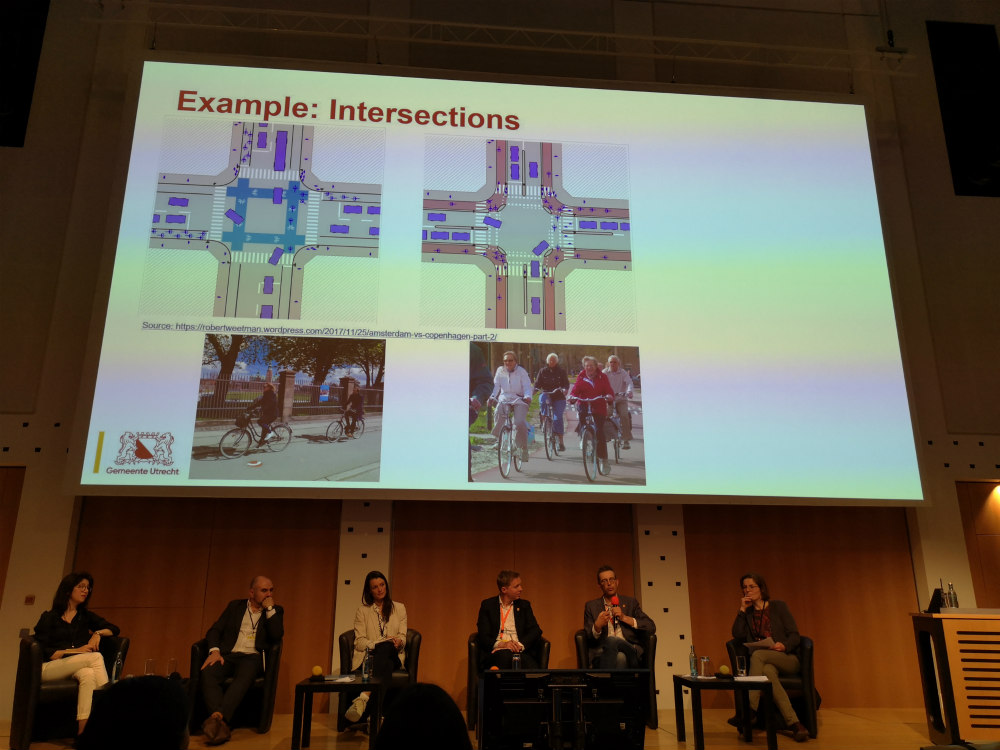
None of which is to say that this is about applying best practices on bike infrastructure from the Dutch experience to other cities. “The problem with best practices,” says Clara Vadillo–Quesada, Active Mobility Training Expert at Académie des Mobilités Actives in Paris, “is that some people see it as a copy and paste exercise.” Yet the planning and the renegotiation of space taking place between urban dwellers, drivers, walkers and cyclists can be very complex in some communities; communication and social engagement are as important as bike infrastructure. I got to experience that with my own eyes, here in Leipzig.
On the third day of the conference I attended the inauguration of a pilot project which officially opened on Thursday, May 11th and in the context of the Velo-city conference 2023. A diagonal barrier alerts drivers of a traffic-calmed area where no more car parking is allowed and diverts traffic through the Hildegardstraße at its intersection with Ludwigstraße. The project, initiated by the non-profit organization Leipzig Superblock e.V. with all the good intentions, found inspiration in the Superblocks of Barcelona. Yet their own reality in the multicultural Eisenbahn street in the eastern part of Leipzig has backfired as they try to make the road less attractive for cars.
Although Leipzig Superblock e.V. claims that they have informed the community along the process, the Mayor for Urban Development in Leipzig, Thomas Dieberg, was confronted with a list of signatures from shop owners from the Eisenbahn street at the opening who didn’t feel that they were involved. They not only fear the lack of parking spaces for their suppliers and their customers, and thus the negative impact on their businesses, they were also particularly hostile to the way the space was used by other members of the community. If there is something that we have learnt at the conference is that the culture and identity of a community are very important factors to consider for any project to succeed at the public space.
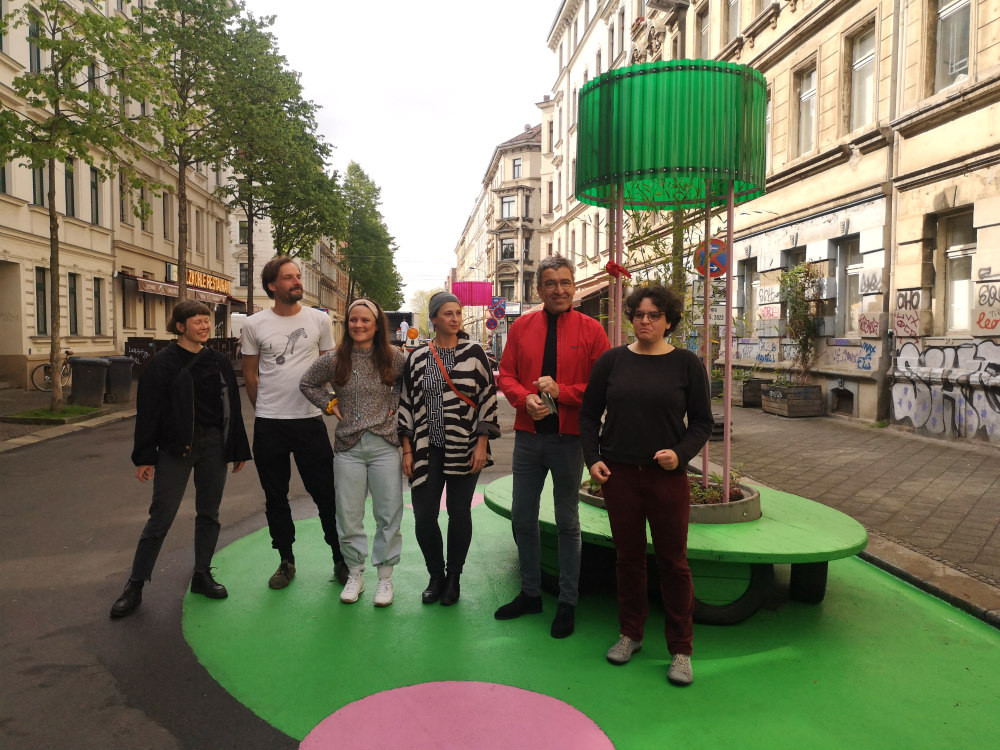
I think it was somebody from the audience attending one of the panels who raised a very interesting point: if people with a low-income finally manage to buy a car, and then the city takes away the car parking, the authorities see a backlash from those communities that feel they are being gentrified after all their efforts. “People resist the rationale for change, engage with the community, involve everyone to be successful, let them understand the change and be part of the change.”
Another way to involve people and get things right is technology. In Zürich, Pro-Velo has developed the VelObserver platform which “gives cyclists a voice in urban and bike infrastructure.” This approach goes along with what researcher Ane Rahbek at the University of Copenhagen said about the need to go very local to gather meaningful data. Data collection of cycling is still marginalized and the level of quality of different data sets is unknown, therefore they should be always compared for completeness and accuracy.
And finally, the Mobility of Care found its way at the conference. This is a serious approach to address gender equality in urban mobility. Alex Baum, manager of BYCS, spoke of the knowledge gap on cycling for care journeys and how cities struggle to accommodate the needs of families with their cycling strategies. Care activities, mostly done by women, influence how, and why many adults move through the city. Baum, co-author with Lucas Snaije, presented the insights of their recently published report on Supporting Cycling Uptake for Care Journeys, based on three pilot programmes that took place in 2022 in Mexico City, Istanbul and Bengaluru, and supported by the Bernard van Leer Foundation. This report explains why and how policymakers and practitioners can support cycling for caregivers and highlights the issues surrounding cycling as a form of caregiver mobility.
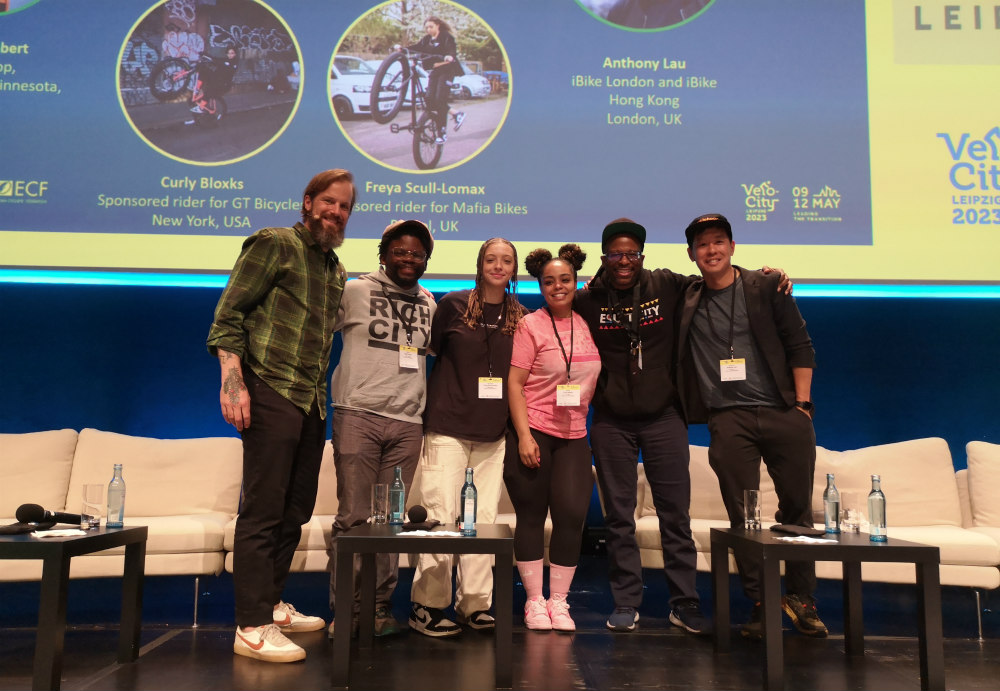
I loved seeing the work of well-known organizations like the Global Designing Cities Initiative and the Institute for Transportation and Development Policy entangled with organizations with less resources, which have opted to work on the ground with grassroots groups. Like BYCS working with Bicitekas in Mexico City, engaged with caregivers and women to grasp the context and the barriers to start cycling. I loved that ecosystem, otherwise, how do we get the grandmothers to cycle in Mexico like in the Netherlands?
And finally, I attended the panel where I mostly felt at home. I listened carefully to cyclists, turned urban activists, there’s a thriving subculture around them. Najari Smith, founder of Rich City Riders, organizes rides in the city of Richmond, California. They all start at the bike shop on the corner, which he has founded and runs as a cooperative. Freya Lomax, sixteen years old, is an inspiring example of how cycling has made space for girls on the streets of Bristol, who are part of a cycling subculture across England. Anthony Lau, the founder of iBike London, brings people together for social bike rides every month in London, supported by Cyclehoop. As for Curly Bloxks, a dental assistant during the day, and a rider at night, she taught herself during the pandemic “how to ride in the same way boys do.”
In Oboi’s words, “the rooms of the conference are full of good hearts and good buddies, but good hearts and good buddies come and go. We need bold policies, and we need you to legislate.” If city officials would support these community rituals and encourage this form of social infrastructure, they would successfully get more people on a bike. In the meantime, Curly Bloxks will keep leaving out from her Instagram the meeting point to ride through the streets of Manhattan.
